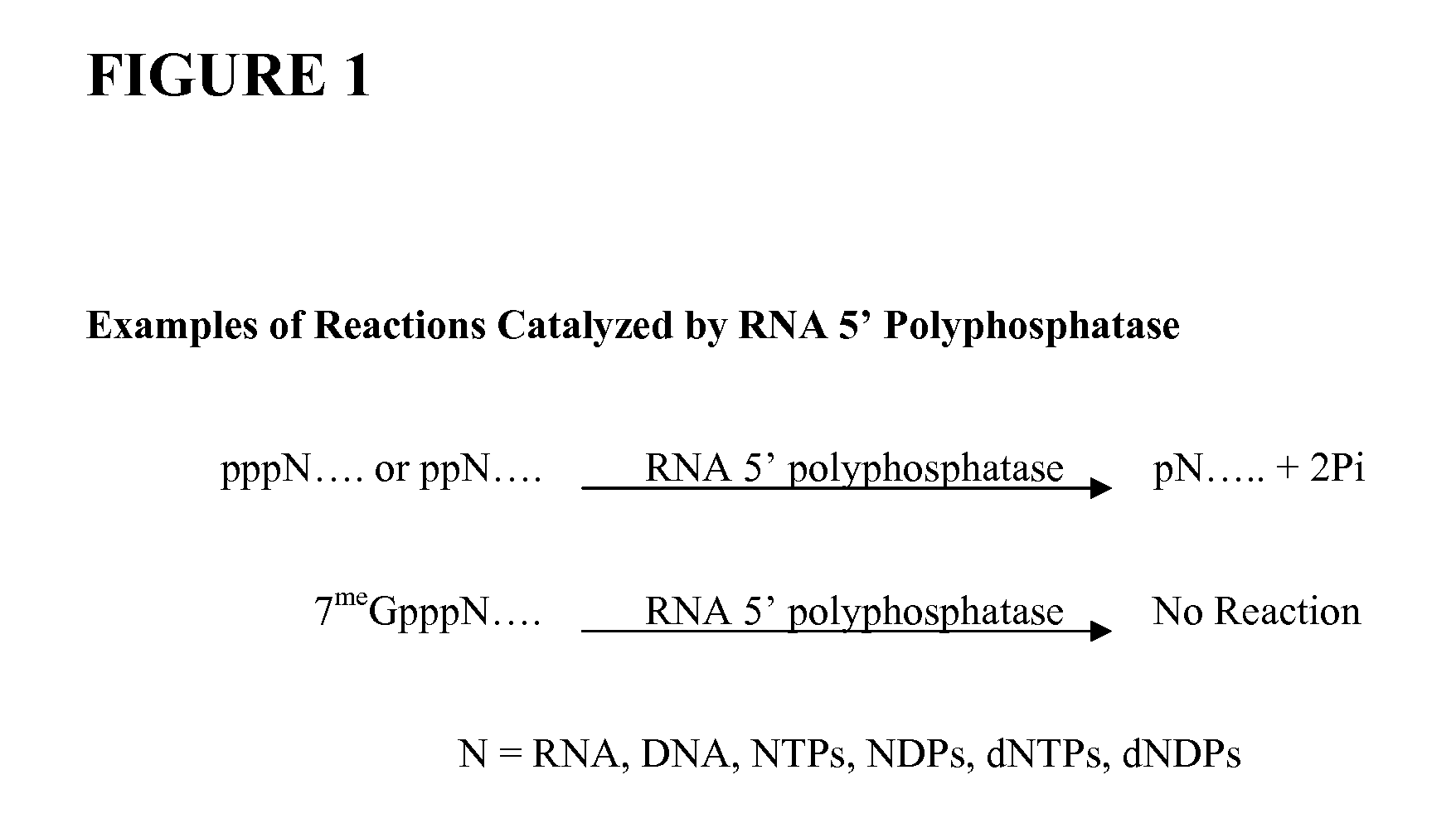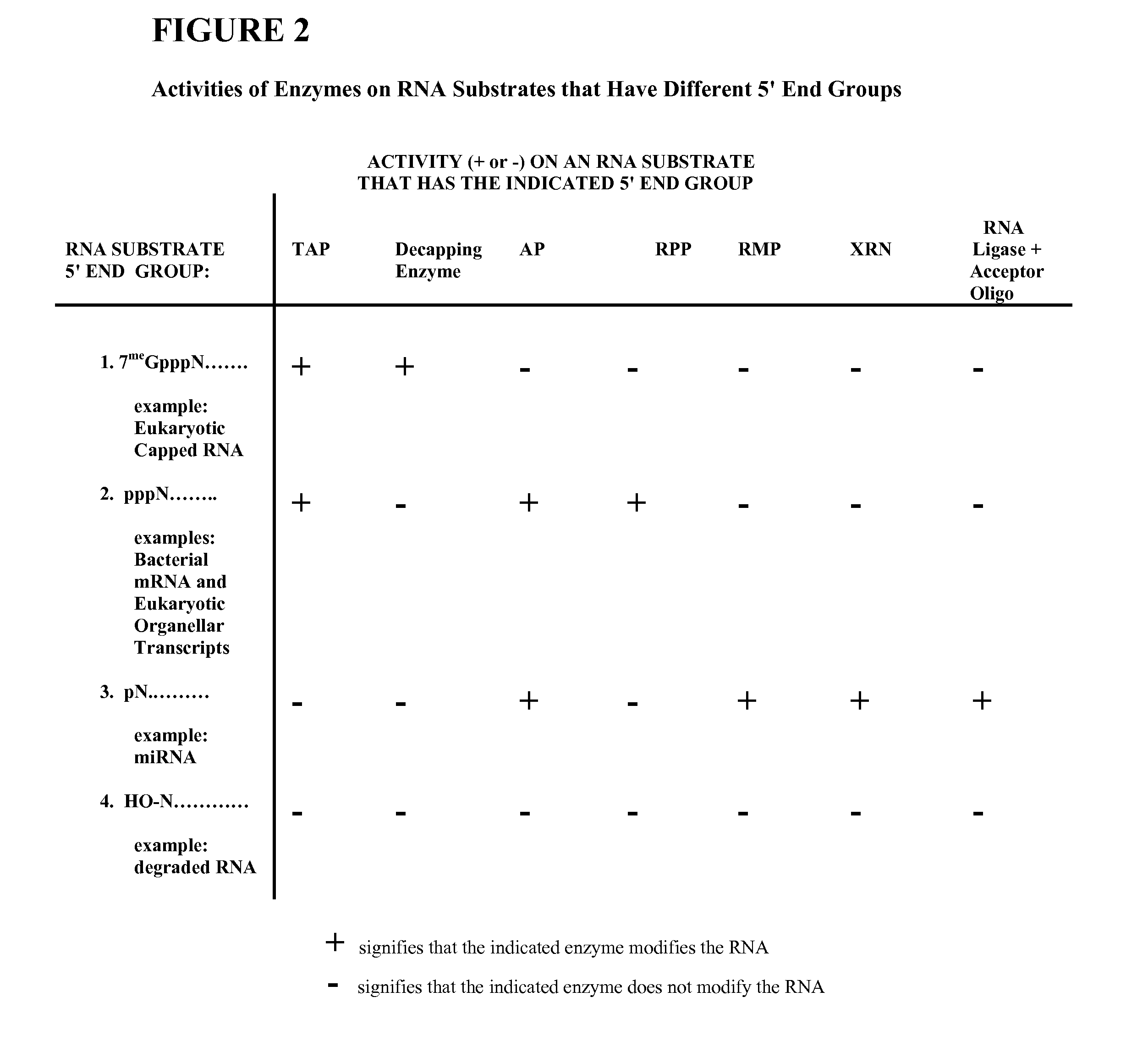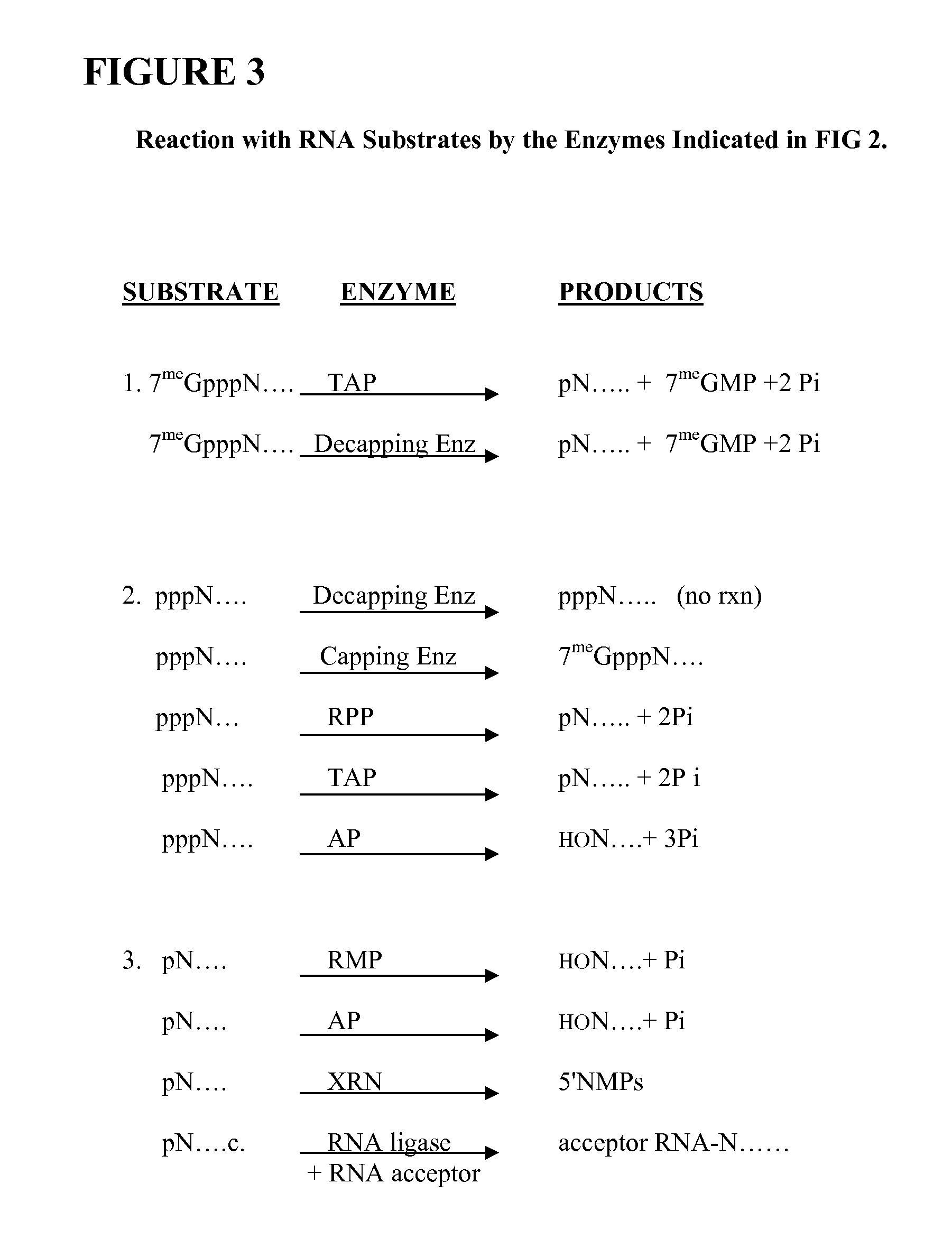Selective 5' Ligation Tagging of RNA
a ligation tagging and selective technology, applied in the field of selective 5' ligation tagging of rna, can solve the problems of difficult to study the expression of pathogenic (e.g., mycoplasma) or symbiotic genes, and no good method in the art for selective 5′ ligation tagging of only uncapped primary rna molecules
- Summary
- Abstract
- Description
- Claims
- Application Information
AI Technical Summary
Problems solved by technology
Method used
Image
Examples
examples
[0225]The following examples serve to illustrate certain preferred embodiments and aspects of the present invention and are not to be construed as limiting the scope thereof.
Discovery and Purification of RNA Polyphosphatase
[0226]The discovery of an RNA polyphosphatase (RPP) occurred when we renatured Escherichia coli proteins in situ in SDS-PAGE gels. The SDS-PAGE (15%) running gel was prepared by polymerization of the polyacrylamide in the presence of gamma 32P-end-labeled RNA (synthesized by in vitro transcription of a linear DNA template using T7 RNA polymerase, T7 reaction buffer, gamma-32P-labelled GTP, and unlabelled ATP, CTP and UTP). After electrophoresis, the SDS-PAGE running buffer was exchanged by incubating the gel in non-SDS-containing buffer to remove the SDS and permit protein renaturation in situ. The gel was incubated in buffer overnight and the gel was stained with SYBR Gold (Invitrogen, Carlsbad, Calif.). An unstained band was evident which migrated with a molecul...
PUM
| Property | Measurement | Unit |
|---|---|---|
| pH | aaaaa | aaaaa |
| pH | aaaaa | aaaaa |
| pH | aaaaa | aaaaa |
Abstract
Description
Claims
Application Information
 Login to View More
Login to View More - R&D
- Intellectual Property
- Life Sciences
- Materials
- Tech Scout
- Unparalleled Data Quality
- Higher Quality Content
- 60% Fewer Hallucinations
Browse by: Latest US Patents, China's latest patents, Technical Efficacy Thesaurus, Application Domain, Technology Topic, Popular Technical Reports.
© 2025 PatSnap. All rights reserved.Legal|Privacy policy|Modern Slavery Act Transparency Statement|Sitemap|About US| Contact US: help@patsnap.com



